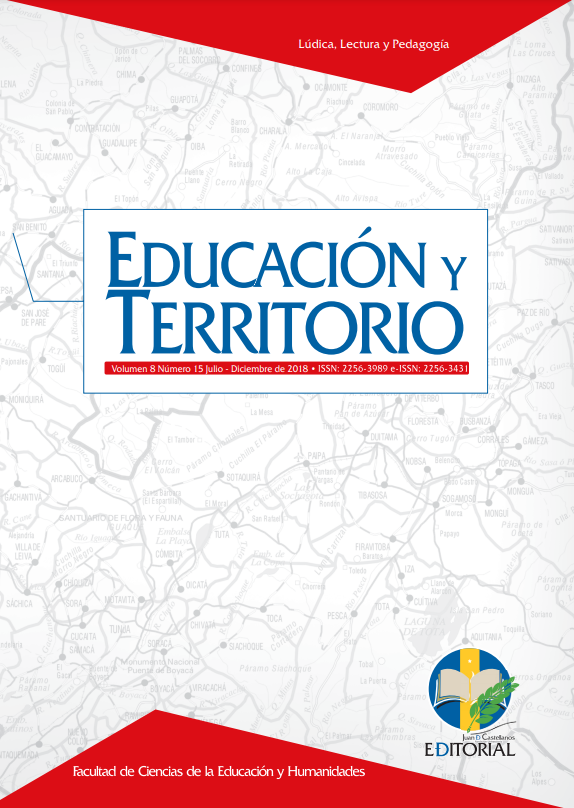Keywords:
free dance, creative dance, dance training, freedom of expression, daily movementAbstract
Education is focused on the transmission and replication of knowledge and unique truths, ignoring creativity and the countless possibilities of answers; therefore, dance training is not exempt from making the same mistakes, which revives the need to use different techniques and school contexts to explore new ways of communication and body expression such as playfulness. In the following research, the results of the pedagogical intervention are shown, which had the purpose of strengthening the corporal expression as a fun tool of students of the tenth grade of Dance Language subject, at Escuela Normal Distrital María Montessori. The design was action research in education with a qualitative approach. It began by recognizing the students’ abilities to express themselves with their bodies. Eight workshops were designed and implemented, based on the students’ experiences, emotions and feelings, to strengthen body expression and to enrich movement patterns through free dance, creativity and play. Observations were recorded in field diaries, one per workshop, and a survey of 5 closed questions was carried out to evaluate the results. It was possible to corroborate the importance of playfulness in body expression, since it encourages in students interest, willingness, creativity and freedom of expression, through a new way of turning to their feelings and emotions to express themselves bodily with security, confidence, autonomy and recognition of themselves and others.
Downloads
References
Baptista, P., Fernández, C., y Hernández, R. (2004). Metodología de la investigación (3.a ed.). McGraw-Hill.
Bolívar, C. (1997). Una aproximación al concepto de lúdica. Revista Kinesis. Enseñanza y aprendizaje, (22), 33-39.
Bolívar, C. (1998, noviembre). Aproximación a los conceptos de Lúdica y Ludopatía. Trabajo presentado en V Congreso Nacional de Recreación de Coldeportes Caldas. Universidad de Caldas/FUNLIBRE, Manizales, Colombia.
Caillois, R. (1994). Los Juegos y los Hombres. La Máscara y el Vértigo. Fondo de Cultura Económica.
Dallal, A. (2001). Cómo acercarse a la danza. Plaza y Valdés S. A.
Díaz, H. (2001). Categorías y principios para la comprensión de la acción lúdica. Una reflexión epistemológica sobre el conocimiento de la lúdica. Cencad.
Dinelo, R., Jiménez, C., y Motta, J. (2005). Lúdica, Cuerpo y Creatividad. Editorial Magisterio.
Elliott, J. (2000). La investigación-acción en educación (4.a ed.). Ediciones Morata. Escuela Normal Superior Distrital María Montessori. (2017). Proyecto de área, Educación Artística.
Jiménez, C. (2000a). Cerebro creativo y lúdico. Editorial Magisterio.
Jiménez, C. (2000b). Neuropedagogía, lúdica y competencias. Editorial Magisterio.
Laban, R. (1978). Danza educativa moderna. Paidós.
Mora, A. (2015). El cuerpo como medio de expresión y como instrumento de trabajo: dualismos persistentes en el mundo de la danza. Cuadernos de Música, Artes Visuales y Artes Escénicas, 10(1), 117-130. http://www.redalyc. org/articulo.oa?id=297042319007
Pabón, A., y Hurtado, D. (2016). “Mi piel es un lienzo”. Sentidos de la Modificación Corporal en Jóvenes de la Ciudad de Cali. Revista Latinoamericana de Ciencias Sociales. Niñez y Juventud, 14(1), 477-491. http:// www.scielo.org.co/pdf/rlcs/v14n1/v14n1a33.pdf
Rial, T., y Villanueva, C. (2016). El Flashmob como propuesta de innovación educativa en expresión corporal y danza. Retos. Nuevas Tendencias en Educación Física, Deporte y Recreación, (29), 126-128. https://recyt.fecyt.es/ index.php/retos/article/view/35394
Ridocci, M. (2009). Expresión corporal, Arte del Movimiento. Biblioteca Nueva.
Sánchez, G., y Ruano, K. (2009). Expresión corporaly Educación. Wanceulen Editorial Deportiva S.L.
Stokoe, P. (1967). La Expresión corporal y el niño. Melos (Ricordi Americana).





